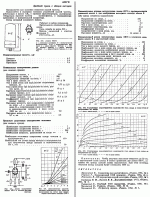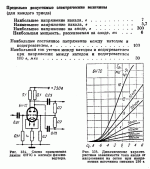They are rather similar to the European ECC33, often used as audio amplifiers and phase inverters in the day. When using as long-tailed pair, just observe the spec. of maximum heater-cathode voltage of 100V; elevate heaters somewhat.
(It is often cited as similar to the 6SN7, but not really; a higher µ of 33 compared to 20 for the 6SN7.)
(It is often cited as similar to the 6SN7, but not really; a higher µ of 33 compared to 20 for the 6SN7.)
I agree. In theory the diode should be there, but no 6N7S have failed during 6...7 year of regular use (some 10 pcs.)
6N7 is designed to B2 operation. Its max. g1 current specs is 22 mA peak.
Maybe its grid is exceptionally robust.
On the other hand, that amplifier has main power and anode power switches and I have suggested to switch anodes on after one minute of warm-up.
This procedure eliminates high voltage at the grid.
6N7 is designed to B2 operation. Its max. g1 current specs is 22 mA peak.
Maybe its grid is exceptionally robust.
On the other hand, that amplifier has main power and anode power switches and I have suggested to switch anodes on after one minute of warm-up.
This procedure eliminates high voltage at the grid.
Regarding a protection diode grid-cathode, one is not so much worried about the possible grid current. In the circuit shown the maximum current could only be 1,6mA and then only for an instant, before the cathodes warm up enough to allow emission to quickly bring the operating voltages to normal.
It is also the grid-(cold) cathode potential. There is a reason why some close spaced tubes have a cold Va.max. of some 500V. Not because of bad experiences by me, but for the negligible extra cost and complexity I would 'chicken out' and add the diode.
It is also the grid-(cold) cathode potential. There is a reason why some close spaced tubes have a cold Va.max. of some 500V. Not because of bad experiences by me, but for the negligible extra cost and complexity I would 'chicken out' and add the diode.
- Status
- This old topic is closed. If you want to reopen this topic, contact a moderator using the "Report Post" button.
- Home
- Amplifiers
- Tubes / Valves
- 6N7's in phase inverter service

